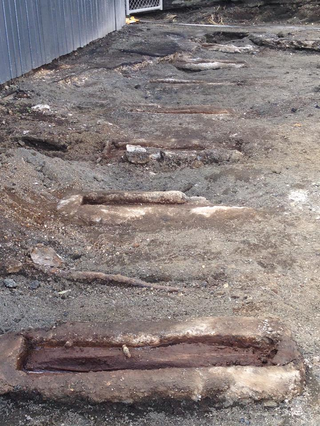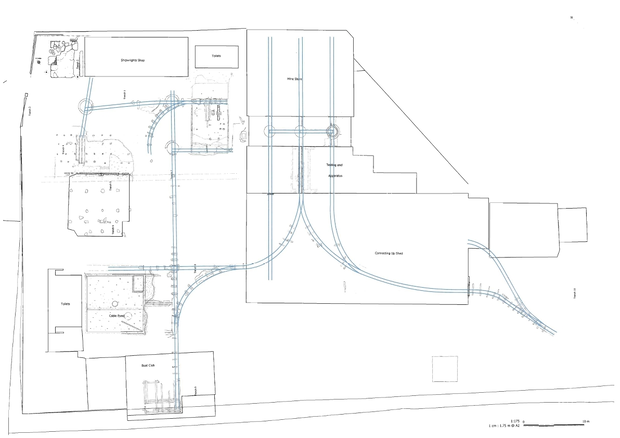
Gavin Grimmer


Update 19th December 2014
On probably one of the top ranking aviation blogsites in New Zealand.... http://rnzaf.proboards.com/thread/2505/north-head-mystery?page=1&scrollTo=19304 a person using a non-de-plume name of “Harrysome” made the following statement, and as the reply needed for his great comment is so long - and another article on it’s own, I thought I would do it as an update here:
Harrysone
Very impressive website, though I'm afraid the 'camouflage' applied to the Torpedo Bay tunnel entrance can't be factual as the cliff face is the real McCoy, I know because we have mapped that outcrop in detail for work (I'm an engineering geologist by profession), its a well welded basaltic lapilli tuff. I can understand, to the uninitiated this stuff can resemble concrete but its quite natural. Its formed when finer air-fall volcanics such as ash & scoria land on the ground in sufficient quantities and still hot enough that it will weld together in-situ.
Hi “Harrysone”
Thank you for the great compliment of my website. I go to extreme lengths to keep it interesting and so comments like this help make it worth while.
I would tend to agree with you in that it certainly appears to be the real McCoy which adds to the mystery even more.
The point is this tunnel is probably the most talked about tunnel on the whole hill
as it certainly appears genuine, but given the amount of people who claim they have
seen it, and even been in it - makes the genuineness of it very sinister.
The most common denominator in all the eyewitness affidavits is of a railway line running into it, and as shown prior on this web site (page 20 and 21) the sunken tar seal indents show evidence of this railway line.
Since I wrote that article, another photo has come to light showing when they were preparing the yard for the upgrade of the main building to the Maritime Museum of today. You will note the actual sleepers shown!
Why they didn't remove the sleepers entirely at that time is a bit of a mystery, but at a guess, someone probably saw the archival historic relevance of them and so tried to disturb them as little as possible by just tar sealing back over them. It is interesting to note that each sleeper was originally concreted into place, obviously to stop them moving around.
The Navy contracted a Ground Penetrating Radar expert to map the existence of railway sleepers long buried under the surface of Torpedo Bay so as to record the historical nature of this base and below is a plan drawn as a result of this survey:

Note the section where these sleepers divert from the line going into the “Connecting Up” shed and also the lack of sleepers shown where we now know they went. Also note the direction this 'line off' was presumed to have taken.
NH Page 45
